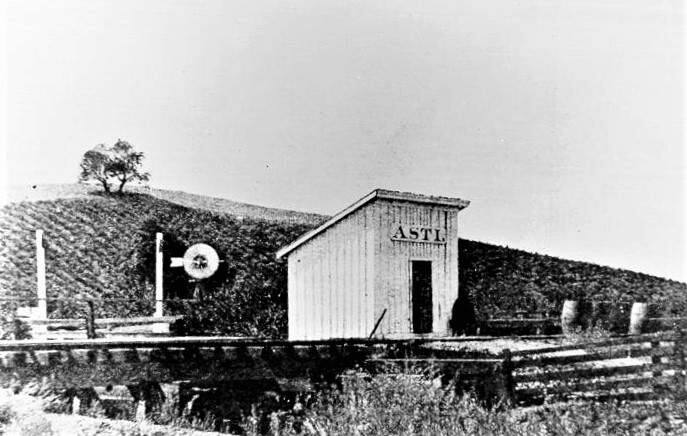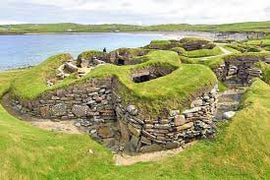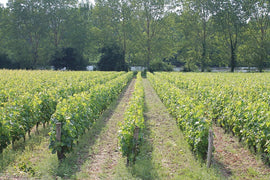CAL-ITALIAN
As the holidays are a time when so many of us head back home, it seems right to conclude this Red Rogues year by keeping it local. Kind of. While Italian varietals are hardly strangers to Californian soil, the quality, variety and visibility of the wine produced from them has fluctuated pretty dramatically over the years. We are currently experiencing something like a renaissance though - as winemakers statewide plumb the Apennine Peninsula for inspiration with increasingly successful results - but it is likely also just the beginning: Italy’s literally countless shades of grape, conducted through the Golden State’s vast spectrum of terroir, is an onephiliac energy source of enormous untapped potential. Whatever the future holds, right now is as good a time as any to mark this moment of ascent with three of the brightest lights on the scene - and toast to the promise they represent. Happy New Year!
The history of Italian winemaking in the United States arguably begins with Florentine merchant and friend of Thomas Jefferson Phillip Mazzei in seventeenth century Virginia, but he eventually moved back to Italy and appears to have left no successors. It wasn’t until the California gold rush of the mid-nineteenth century that significant numbers of Italians began coming to the US and journeying west. Mostly from Northern Italy, they farmed land, planted grapes, and made wine. Among the most important was Andrea Sbapboro, who arrived from Genoa, aged twelve, in 1850. In 1881, he formed the Italian-Swiss Colony, consisting of 1,500 acres in northern Sonoma County near Cloverdale, around the village of Asti (named for the Piedmontese wine-making commune.) Spapboro initially intended the venture to be a combination business-social philanthropy concern that would employ (and eventually provide ownership stakes to) the large local Italian immigrant labor pool. While the latter part of the project never quite took off, the business end proved quite successful, planting grapes as diverse as Zinfandel, Carignane, Mataro, Barbera, Cabernet, Pinot Noir, Riesling, Pinot and Sauvignon Blanc, modernizing production and distribution enough to weather phylloxera and market fluctuations, and arriving around the turn of the century as the biggest producer in a California wine industry that was selling its product all over the world.
The passage on the 18th Amendment in 1919 prohibiting the sale of alcohol destroyed all that of course. And a loophole in the law allowed each home to make “200 gallons of non-intoxicating cider and fruit juice per year” so thousands of Americans began to make their own wine at home. The price of grapes skyrocketed and to meet the demand, growers tore out their fine wine varietals and replaced them with lower quality grape varieties better suited to shipping. Following repeal, it would take more than half a century for California to return to its pre-Prohibition production level, and in that time the local industry increasingly shifted its focus to French derived varietals more suited to California’s large diurnal temperature shifts. The famous Judgment of Paris in 1976 - when a panel of French wine critics crowned California Chardonnay and Cabernet Sauvignon best in show during a blind tasting - greatly accelerated this trend.
In the 80-90s there was an attempt to inaugurate a Cal-Ital trend that failed due to massive and indiscriminate plantings of Italy’s most famous red grape, Sangiovese, on uncongenial dirt, that likely discouraged further attempts for a while. But the old vines planted in the mid to late 19th Century remained, and as local winemakers have found it easier to train and study in Italy, find relatively unheralded vineyards and benefit from the experience of others as well as their own experiments, we have arrived at an inflection point for unique expressions of the gamut of Italian grapes. From the northern and central reds excerpted here - Nebbiolo, as terroir sensitive as Pinot Noir, and well suited to the cooler weather of the Central Coast; Barbera which grows best in the Sierra Nevada foothills and distinguishes itself from its European relation with lush dark fruit and herb; and Sangiovese, spotlighted in perhaps its oldest Napa incarnation - to white varietals like Vermentino and southern grapes such as Algianico and Carricante, there is so much to discover, explore and savor.
Cheers!
The PlumpJack Wine Team
|
Region / Country of Origin: Alisos Canyon, Santa Barbara, California. |
About the winery: Lepiane wines made with a sense of place, tradition, and a nod to the future. Luigi Lepiane immigrated to California from Calabria in 1885 and worked as a cellar master for Hollister Winery. In 1935 he founded his own winery, but he passed away in 1938 after a battle with cancer. Three generations later, his great-granddaughter Allison started producing Italian varietal wines in Santa Barbara under the family name. From one acre of vines in the hills above Los Alamos that date from the 1990s. Alisos Canyon is a transitional region between the coldest coastal Sta. Rita Hills AVA vineyards and those in warmer Ballard Canyon AVA to the southeast. Soils are based on weathered sandstone and shale, the Paso Robles and Sisquoc formations, with a rare limestone streak. Winemaking Notes: Raised in 600L casks for 30 months followed by 20 months in bottle to soften and balance the acid and tannin. Only one racking and very minimal additions of SO2 . Only 85 cases produced. Certified organic. Tasting Notes: California sunshine infused with ripe red fruit and rounded chalky tannins The aromatics are pure Nebbiolo; intensely floral, dark fruit notes, earth, and tae. It doesn’t have massive tannins like Piemontese versions of this varietal, but it’s got everything else you would want in a Nebbiolo. 94 Points Wine Enthusiast, Cellar Selection; 95 Points Decanter |
|
Winemaker: Alison Thompson |
|
|
Price per bottle / Price per case: $52 btl / $561.60 |
|
|
Suggested Food Pairing: Enjoy it now with braised short ribs, a platter of salumi, or late summer caponata. |
|
|
Region / Country of Origin: Calistoga, Napa Valley CA |
About the winery: Shypoke calls the Calistoga, Napa Valley AVA home. The Estate vineyard is sited in the North-Western corner of the world famous Napa Valley on a bed of alluvial soil. The winery’s history begins in 1904, when winemaker Peter Heitz’ Great Grandparents immigrated from Alsace, France and literally planted roots and built bonded winery #130 for the production of fine wines. Through nine generations of Alsatian and now five generations of California Vignerons, the family has built upon and honored the craft of tending unique soils and fusing the resulting fruit into uniquely elegant and honest wines of place and vintage. About the winemaking: Sourced from the estate block of Sangiovese, named in honor of Olivia Meyer, the great, great granddaughter of Michael and Louise Heitz who planted roots in this soil in 1904. Hand picked & cold soaked while awaiting the fermentation start. Then gentle hand punch downs. Pressed directly to seasoned French oak barrels for native ML fermentation. These very traditional methods employed help capture the sense of place and time. Tasting Notes: Crushed Raspberries and Strawberries. Toasted vanilla, rhubarb and cherries Fresh, bright, elegant. |
|
Winemakers: Meg & Peter Heitz |
|
|
Price per bottle / Price per case: $42 btl/ $453.50 case |
|
|
Suggested Food Pairing: Brown Butter Roasted Gnocchi Grilled Chicken Breast with Mashed Potatoes Pork Chops |
|
|
Region / Country of Origin: Sierra Foothills (Amador County) |
About the vineyard: Cooper Ranch lies in the rolling hills outside of Plymouth, California, full of Amador's rocky, red granite soil. The Coopers planted Barbera here in the late '50's, far ahead of everyone else in Amador County Like an old vine Zin, the Coopers head train their Barbera vines, a strategy that, while labor intensive, concentrates flavors while maintaining bright acids. About the Winemaking: After a warm, dry February that encouraged vineyards to early bud break, Amador County returned to winter conditions with adequate but not excessive rain. Warm summer temperatures were ideal for maturing fruit and a long, warm, dry fall encouraged development of rich color and flavor. Tasting Notes: This Barbera is loaded with cherry and cassis aromas with a sprinkling of clove. In the mouth it’s full of darker cherry and cola flavors with nutmeg on the finish. ith firm acidity and moderate tannin, flavors deepen, and it just keeps improving with time. |
|
Winemaker: Steve and Merilee Schafer |
|
|
Price per bottle / Price per case: $34 btl/ $367/20 case |
|
|
Suggested Food Pairing: Herbed pork roast is one of our favorites with it, and it’s delightful with creamy pasta or risotto. The wine’s fruit and acid are perfect foils for rich food. |
|





